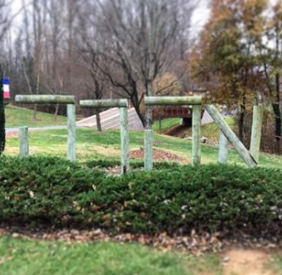
I recently spent a beautiful Shabbat with the students and faculty of The American Hebrew Academy in Greensboro, NC. It was a wonderful experience for me and I am so grateful to have had a chance to meet the people there and offer a few teachings along the way. I learned a lot during my 30 or so hours on campus. Some of that learning is captured here, in no particular order.
- If you want to know someone or something, pay attention and they will show you. I came to AHA with few preconceived notions and a good amount of curiosity. What would I discover while there? I discovered the power of paying attention and honoring what I experienced. I experienced a lot of joy and energy, a lot of smiling faces, a deep sense of familiarity, and much more. My attentiveness was rewarded and I feel like I know the AHA community simply by being curious and paying attention.
- We can’t help but tell our story. I led a Reform style minyan on Friday night. When we began singing Noam Katz’s song, “Roll into Dark,” many of the students in attendance started doing a choreographed series of hang gestures. Afterward I told them that I felt like they were telling me a story. And, in fact, they were. Somewhere in that spontaneous series of choreographed hang gestures, there was a story. More than likely, it was a sacred story.
- Be true to yourself. I didn’t know quite how to prepare for a weekend full of teaching in a community that is both 100% unique and that was foreign to me at the time. In addition to the great advise and support I got from my contacts at AHA, I also trusted my gut and prepared in a way that felt authentic to me. Knowing that I was walking into something of an unknown, I put my energy into the greatest known-unknown of all– myself. Knowing that people respond to authenticity, I was able to move forward from there.
- Environment matters. The physical facilities of AHA are extraordinary. Wherever the students are, there’s a kind of natural energy that emerges. But there are vast expanses of land that are often unoccupied. What that means is that the AHA community has a place where they can go to be quiet. If they need some silence and stillness, it exists for them. The wooded setting, the lake, the many walking paths and bridges, these all contribute to the special spirit of AHA.
- Listen. We’ve got two ears and one mouth for a reason. All of us need to do a better job of listening these days. It’s tough to model listening when people have come, on some level, to hear you do the talking. But even when you’re doing the talking, the importance of listening simply can’t be overstated. The greatest insights, the most poignant comments, the gems– these seldom come from us. If we’re lucky, we’re there to hear them. If we’re intentional, we can figure out the best way to get people speaking, sharing, and engaging.
- The Whole World is a Narrow Bridge. I must’ve heard the song, “Gesher Tzar M’od,” at least 6 times during my visit to AHA. It’s one of those songs that Jews from all around the world know. I won’t forget the wild Shabbat singing, especially of this song.
This post only scratches the surface of what I learned at The American Hebrew Academy. During my time there, and in the days following, I keep coming back to the fact that AHA is truly an unprecedented undertaking for the Jewish community. Jews from different countries and religious backgrounds share a common bond of Torah and Klal Yisrael. But that doesn’t meant that we fully understand one another or can co-exist in constructive and harmonious ways. The students and staff of The American Hebrew Academy live the value of Klal Yisrael every single day. My impression is that doing so brings with it a series of complex and sometimes unsolvable challenges. And it is these very challenges that create a sense of respect, cohesion, and community there.